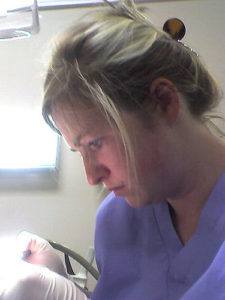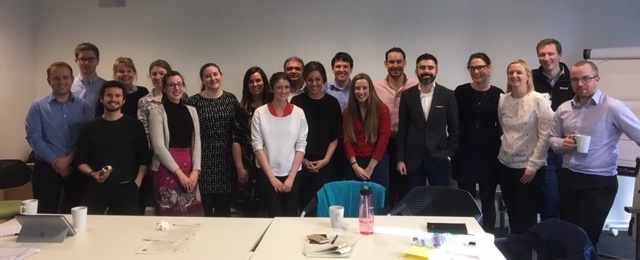
The long term survival and success data surrounding short dental implants is still in its infancy as opposed to sinus augmentation (sinus lift) techniques which are well recognised as a legitimate alternative.
From a biological standpoint, graft materials are not an absolute pre-requisite in sinus augmentation (sinus lift) for de-novo bone formation. Creation of space above a bony surface stimulates the osteogenic potential of the periosteum alongside additional perforation of the cortical plate. However, maintenance of that space is essential to allow bone formation to occur over weeks and months as collapse will prevent bony infill.
Such procedures require additional surgical skill sets and introduce additional risks of intra- and post-operative biological complications. Graft materials also introduce further costs to patients and organisations.
Best clinical practice relies on an evidence based approach to provide care that is of high quality and maximizes success rates in a cost-effective manner. If such materials can be avoided then this could confer economic and biological benefits to the recipient.
This systematic review looks to answer the question of whether or not grafting provides a significant benefit to the success of dental implants placed alongside sinus augmentation.

This systematic review looks to answer the question of whether or not grafting provides a significant benefit to the success of dental implants placed alongside sinus augmentation.
Methods
This review included both randomised and non-randomised controlled clinical trials (RCTs and CCTs) involving patients in good health who need sinus lift to allow implant placement.
Relevant studies published in English were identified by searching MEDLINE, EMBASE and CENTRAL databases as well as www.opengrey.eu.
Two reviewers independently screened titles and abstracts and sought full texts for potentially relevant publications. Full papers were included with the agreement of two reviewers. Any disagreement was resolved by discussion with a third reviewer.
Risk of bias was assessed using the Cochrane Risk of Bias tool for RCTs. A quality assessment was undertaken using the GRADE system. The primary outcome assessed was implant survival (defined by the reviewers as absence of mobility, pain, peri-implant infection or continuous radiolucency around the implant).
Findings
From the 3180 studies identified, a total of 6 studies were included for systematic review, of which 5 were RCTs and 1 was a CCT.
Included studies showed heterogeneity. Studies varied with respect to outcomes, follow-up period (6-months to 5-years), smoking (non-smokers and heavy smokers), sinus-lifting technique (lateral window and OSFE), the graft material used (autograft, allograft and xenograft), timing of implant placement (at the time of sinus lift vs second stage surgery), and the prosthetic superstructure (cemented metal ceramic/porcelain fused to gold bridges, single screw/cement retained crowns and implant supported FDPs).
The unit of analysis was at the implant level and the data underwent meta-analysis.
Between the grafted and non-grafted groups there was no significant difference in:
- implant survival (p=0.23, OR = 1.81, 95% CI 0.73 to 4.52);
- implant failure (p=0.20, OR = 0.55, 95% CI 0.22 to 1.38);
- overall endo sinus bone gain (p=0.1, Diff-M -0.58, 95%, CI -1.28 to -0.12);
- overall crestal bone loss (p=0.78, Diff-M = -0.03, 95% CI -0.22 to 0.17).
The only significant differences found were at one-year for the non-grafted group:
- endo sinus bone gain (p=0.001, Diff-M = -1.11, 95% CI -1.78 to -0.43);
- crestal bone loss (p<0.0001, Diff-M -0.81, 95% CI -0.88 to -0.74).
Implications
The results of this review should be considered with caution. The quality of the primary literature search used in this study was adequate. However, the nature of the intervention considered does not lend itself to a large number of studies.
The paper that provided the majority of the implant data was not randomised.
Medical history and smoking status weren’t considered uniformly across the 6 studies included in the meta-analysis.
Overall, there was no significant difference between maxillary sinus grafting vs no sinus grafting. However, this was based upon a small number of studies, which demonstrated a high degree of heterogeneity in terms of graft materials, surgical approach and loading protocols. Follow up was short term (up to 5 years), so longer term outcomes cannot be determined.

Big thanks to the Scottish Dental Registrars for their blog contribution today!
Links
Primary paper
Nasr S, Slot DE, Bahaa S, Dörfer CE, Fawzy El-Sayed KM. Dental implants combined with sinus augmentation: What is the merit of bone grafting? A systematic review. J Craniomaxillofac Surg. 2016 Oct;44(10):1607-1617. doi: 10.1016/j.jcms.2016.06.022. Epub 2016 Jul 2.
Other Dental Elf blogs on sinus lift.
Image credits
- The_moment, Flickr CC BY 2.0
- Pat Hayes, Flickr CC BY 2.0
